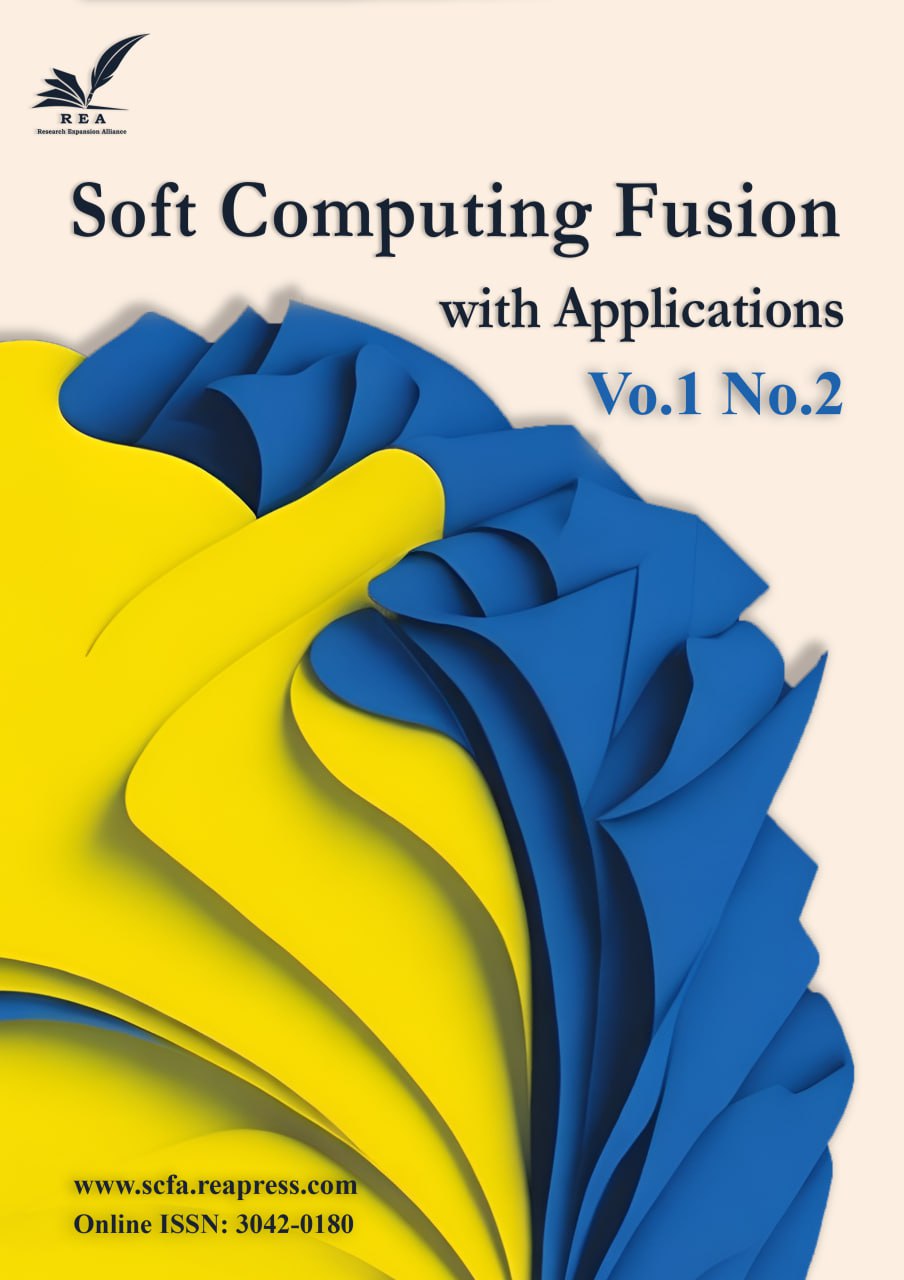IoT-Driven Street Lighting Optimization Using AI in Urban Areas
Abstract
Urban street lighting systems play a crucial role in ensuring safety and improving the quality of life within cities. Nevertheless, conventional lighting methods often result in inefficiencies, high energy consumption, and greater operational expenses. This paper introduces an Internet of Things (IoT)-based optimization model that leverages Artificial Intelligence (AI) to improve the management of street lighting in urban settings. The suggested system incorporates smart sensors, real-time data analysis, and machine learning techniques to modify lighting levels according to environmental factors and the presence of pedestrians. A case study performed in a mid-sized city revealed a 30% decrease in energy consumption and enhanced lighting quality, which in turn has led to greater public satisfaction. The findings suggest that the application of AI and IoT technologies can substantially improve urban streetlight management, thereby assisting in the development of sustainable cities. This research highlights the groundbreaking potential of intelligent systems in refining urban infrastructure, paving the way for smarter and more efficient urban areas.
Keywords:
Internet of things, Street lighting optimization, Artificial intelligence, Urban infrastructure, Energy efficiencyReferences
- [1] Bryant, J. M., & Hake, H. G. (1911). Street lighting. Bulletin/university of illinois, engineering experiment station; no. 51, 4(8). https://www.ideals.illinois.edu/items/4981
- [2] Abeywickrama, M. G. (2012). Fluorescent lamps. In Lamps and lighting (pp. 194–215). Routledge. https://doi.org/10.4324/9780080928739
- [3] Bourget, C. M. (2008). An introduction to light-emitting diodes. HortScience, 43(7), 1944–1946. https://doi.org/10.21273/HORTSCI.43.7.1944
- [4] Mohapatra, H., & Rath, A. K. (2020). Fault-tolerant mechanism for wireless sensor network. Institution of engineering and technology wireless sensor systems, 10(1), 23–30. https://doi.org/https://doi.org/10.1049/iet-wss.2019.0106
- [5] Akhter, F., Khadivizand, S., Siddiquei, H. R., Alahi, M. E. E., & Mukhopadhyay, S. (2019). IoT enabled intelligent sensor node for smart city: Pedestrian counting and ambient monitoring. Sensors, 19(15), 3374. https://doi.org/10.3390/s19153374
- [6] Khemakhem, S., & Krichen, L. (2024). A comprehensive survey on an IoT-based smart public street lighting system application for smart cities. Franklin open, 8, 100142. https://doi.org/10.1016/j.fraope.2024.100142
- [7] De Paz, J. F., Bajo, J., Rodríguez, S., Villarrubia, G., & Corchado, J. M. (2016). Intelligent system for lighting control in smart cities. Information sciences, 372, 241–255. https://doi.org/10.1016/j.ins.2016.08.045
- [8] Zhang, S., & Abdel-Aty, M. (2022). Real-time pedestrian conflict prediction model at the signal cycle level using machine learning models. IEEE open journal of intelligent transportation systems, 3, 176–186. https://doi.org/10.1109/OJITS.2022.3155126
- [9] Mamoona Humayun, M. S. A., & Jhanjhi, N. (2022). Energy optimization for smart cities using IoT. Applied artificial intelligence, 36(1), 2037255. https://doi.org/10.1080/08839514.2022.2037255
- [10] Mohanty, P., Pati, U. C., & Mahapatra, K. (2024). EnSlight: Energy autonomous LoRaWAN-based, IoT-enabled, real-time street light management system for smart cities and smart villages. In Artificial intelligence techniques for sustainable development (pp. 114–139). CRC Press. https://doi.org/10.1201/9781003546382
- [11] Yang, Y. S., Lee, S. H., Chen, G. S., Yang, C. S., Huang, Y. M., & Hou, T. W. (2020). An implementation of high efficient smart street light management system for smart city. IEEE access, 8, 38568–38585. https://doi.org/10.1109/ACCESS.2020.2975708
- [12] Tello-Oquendo, L., Lin, S. C., Akyildiz, I. F., & Pla, V. (2019). Software-defined architecture for QoS-aware IoT deployments in 5G systems. Ad hoc networks, 93, 101911. https://doi.org/10.1016/j.adhoc.2019.101911
- [13] Raza, U., Kulkarni, P., & Sooriyabandara, M. (2017). Low power wide area networks: An overview. IEEE communications surveys & tutorials, 19(2), 855–873. https://doi.org/10.1109/COMST.2017.2652320
- [14] Chang, C. W., Lee, H. W., & Liu, C. H. (2018). A review of artificial intelligence algorithms used for smart machine tools. Inventions, 3(3), 41. https://doi.org/10.3390/inventions3030041
- [15] Menghani, G. (2023). Efficient deep learning: A survey on making deep learning models smaller, faster, and better. Association for computing machinery computing surveys, 55(12), 1–37. https://doi.org/10.1145/3578938
- [16] Mishra, S.R., Mohapatra, H., & Saxena, S. (2024). Leveraging data analytics and a deep learning framework for advancements in image super-resolution techniques: From classic interpolation to cutting-edge approaches. In Data analytics and machine learning. Springer, Singapore. https://doi.org/10.1007/978-981-97-0448-4_6
- [17] Bachanek, K. H., Tundys, B., Wiśniewski, T., Puzio, E., & Maroušková, A. (2021). Intelligent street lighting in a smart city concepts—A direction to energy saving in cities: An overview and case study. Energies, 14(11), 3018. https://doi.org/10.3390/en14113018
- [18] Fumo, N., & Biswas, M. A. R. (2015). Regression analysis for prediction of residential energy consumption. Renewable and sustainable energy reviews, 47, 332–343. https://doi.org/10.1016/j.rser.2015.03.035
- [19] Allan, A. C., Garcia-Hansen, V., Isoardi, G., & Smith, S. S. (2019). Subjective assessments of lighting quality: A measurement review. Leukos, 15(2), 115-126. https://doi.org/10.1080/15502724.2018.1531017
- [20] Johansson, M., Pedersen, E., Maleetipwan-Mattsson, P., Kuhn, L., & Laike, T. (2014). Perceived outdoor lighting quality (POLQ): A lighting assessment tool. Journal of environmental psychology, 39, 14–21. https://doi.org/10.1016/j.jenvp.2013.12.002
- [21] Gagliardi, G., Lupia, M., Cario, G., Tedesco, F., Cicchello Gaccio, F., Lo Scudo, F., & Casavola, A. (2020). Advanced adaptive street lighting systems for smart cities. Smart cities, 3(4), 1495–1512. https://doi.org/10.3390/smartcities3040071


